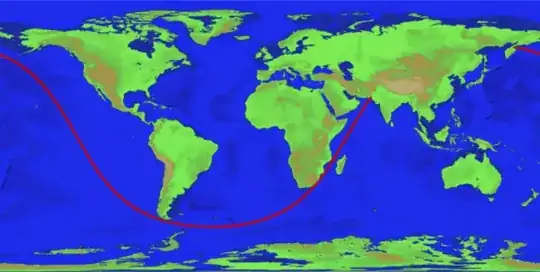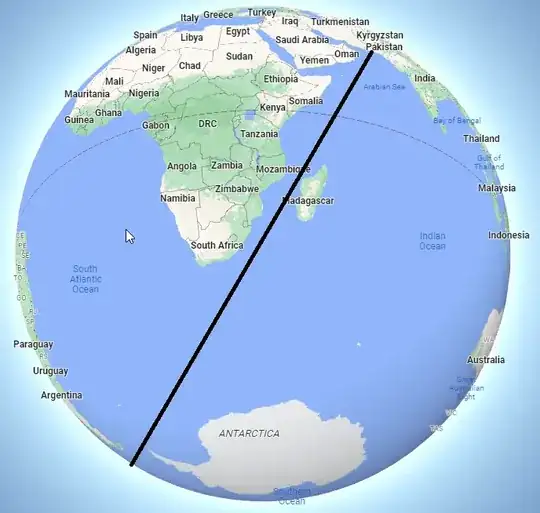What they are saying is that, if you leave Kamchatka in the correct direction, you can sail to Pakistan without changing the rudder setting. It does not mean you will always follow the same compass heading, you emphatically will not.
The reason is that a "straight" line on a sphere is what's called a "great circle". If you cut a sphere with a plane that goes through the centre of the sphere, the line it traces on the surface is a great circle.
A great circle is considered a straight line, because it is the shortest distance between 2 points, as long as you can't leave the surface of the sphere. All great circles on a sphere are the same size. Meridians are great circles, but lines of latitude (except the equator) are not.
Airplanes flying long distance follow great circles, to minimise fuel use. A flight from Seattle to London will pass over Greenland; planes going to Sydney from Santiago sometimes (depending on winds) fly far enough south to make Antarctica visible. They fly a "straight" line around the earth. For more details, see Flight Paths and Great Circles – Why Are Great Circles the Shortest Flight Path?.
You may have noticed that the path of satellites, projected on the surface, follows a similar curve. See, for example, the path of the International Space Station. While the path of the ISS is not circular, compared to the radius of the earth, the difference is minimal. The ISS obviously does not ever deviate from a straight line around the earth, yet, around it goes. With the ISS, the curve shifts from one orbit to the next, because the earth rotates underneath. If you extend the curve on your map, you'll notice it gets you back to Kamchatka.
The real problem is that a sphere cannot be accurately mapped on a flat map. There are always distortions. It's those distortions that convert a straight line into what looks like a curve. Wikipedia has a good article on the various types of map projections and their pros and cons.

